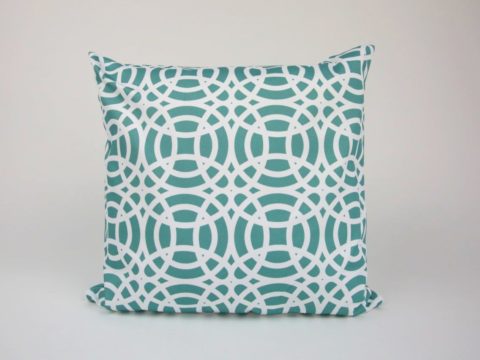Katherine Willoughby: Life Story
Chapter 9 : Exile
As Katherine’s grief for her sons moderated, she considered remarriage. She had a duty to provide an heir for her barony of Willoughby, and, aged thirty-three in 1552, had not much time to waste in an era when healthy childbearing days were shorter. Her views on arranged marriages mentioned above, suggest that Katherine’s choice was made for personal satisfaction as well as to perform her duty. She selected Richard Bertie, who had been her Master of Horse and Gentleman Usher for several years.
Bertie was of humble origin – son of a master mason - but he was a graduate of Oxford, and a staunch Protestant. The marriage proved happy, and the couple had two children – Susan and Peregrine.
In the spring of 1553, there was consternation in Protestant circles. The king was in poor health, and it soon became apparent that he would not live to grow up. His heir, under statute and the will of Henry VIII, was his half-sister, Mary. But Edward, and those who surrounded him, were unhappy with the idea of the throne passing to her. The close bond Edward had had with Mary in his early childhood had been broken by their religious differences. Edward had been educated since his accession as a Protestant, whilst Mary had refused to countenance any changes in religious practice from those left by her father. The two had quarrelled bitterly.
Edward, perhaps prompted by his mentor, the Duke of Northumberland, but certainly willingly, sought to replace Mary in the succession with Katherine’s step-granddaughter, the fearsomely intelligent and radically Protestant Lady Jane Grey, married to Northumberland’s son (his initial plan was more complex – see here.
There is no evidence that Katherine had any involvement in the plan, but it seems likely she would have favoured it. For her step-granddaughter to be queen, and to continue the promotion of Protestantism, would have satisfied all of Katherine’s social and religious requirements.
But the plan failed, and Mary was proclaimed as queen, making a triumphal entrance into London in August 1553. Jane’s mother, Frances, had already pleaded for the life of her husband, whom Mary forgave, whilst Jane was confined to the Tower. Her life would have been saved, had Suffolk not become embroiled in rebellion in February 1554, an act of lunacy that resulted in the execution of both of them.
Katherine, even if she had wished to take part in political events, was unable to – her first child by Bertie, Susan, was born in early 1554, but her religious opinions were well known, and so were those of her husband. Bertie was summoned to appear before Katherine’s old adversary, Bishop Gardiner, who was now Lord Chancellor, initially on the pretext of an unpaid debt to the crown owed by Katherine’s first husband.
The interrogation soon turned to religion – Gardiner wished to know (perhaps on orders from the queen, who had once been on very friendly terms with Katherine) whether she could be persuaded to re-embrace the traditional faith. Bertie hedged, but suggested that his wife was a reasonable being, open to persuasion and argument. Of course, Bertie was well aware that Katherine’s Protestantism was deeply felt – she had sent money to the Protestant bishops, Latimer and Ridley, now both languishing in prison.
Katherine and Bertie began to think about leaving England – a number of convinced Protestants had already left, and the government, by and large, encouraged it. However, for such a prominent couple, an excuse was needed for Bertie to request licence to travel. It was granted, on the understanding that he would be going to the Emperor, to follow up monies owed to Katherine’s first husband.
He set out in mid-1554, and soon after, Katherine moved to her home at the Barbican, London. It would be easier to leave England without a licence from London, than from Grimsthorpe. Before dawn on New Year’s Day, 1555, Katherine, disguised as a merchant’s wife and carrying Susan, slipped out of the house with five others, and made for the wharf where she was to enter a barge that would take her first to Leigh, where Bertie was waiting for her.
They remained in Leigh for some days or even weeks, disguised, but probably not in real danger – the government would have had to be particularly dense to have been unaware of their plans – Katherine had sold her furniture, and informed many of her friends of her plans, and the couple had made no outward show of Catholicism.
In due course, after an unpleasant crossing of the Channel, they arrived in the Low Countries, the territory ruled by Queen Mary’s husband, King Philip, in his role as Duke of Burgundy. Clearly, this was not the place to remain permanently, and they soon moved on to the duchy of Cleves in the Holy Roman Empire. Within the Empire it had been agreed, by and large, that the local ruler would prescribe the religion of his fief, and Duke Wilhelm of Cleves (brother of Henry VIII’s fourth wife) had accepted the Confession of Augusburg, the Lutheran declaration of faith.
Bertie hoped to obtain permission for them to settle in Wesel, where a minister, Francis Perusell, whom Katherine had once helped, resided. They awaited news in the town of Xanten, but rumours soon spread that the unassuming merchant and his wife were not what they appeared to be. Xanten was subject to the Catholic bishop of Arras, so Katherine and Bertie decided to leave before he could question them.
They had an unpleasant journey, in driving rain, and arrived at Wesel with nowhere to stay and unable to locate Perusell for several hours. Eventually, they tracked him down at a friend’s house and were taken in, soaked to the skin, baby Susan crying and Katherine, in the early stage of pregnancy, exhausted.
Katherine Willoughby
Family Tree




